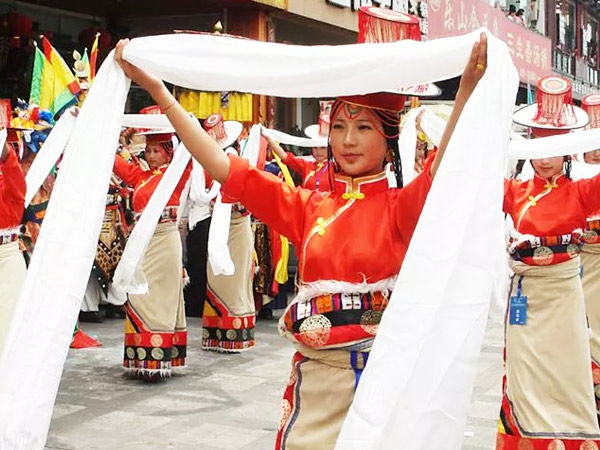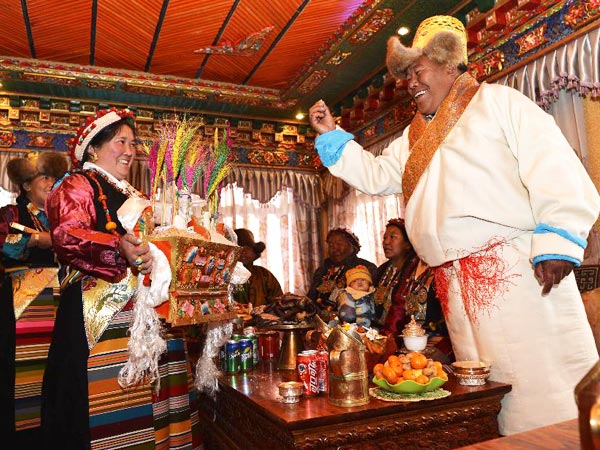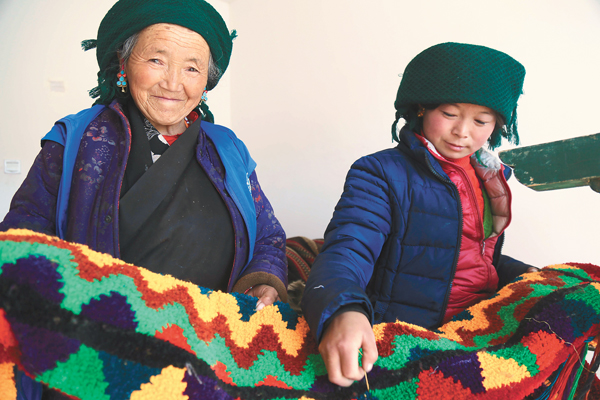How do Local Tibetans Celebrate New Year—the Annual Losar Festival
A unique three-day festival that mixes the sacred and secular practices of the Tibetan Buddhists, the Tibetan New Year, also known as “Losar” is the single most important festival in the Tibetan lunisolar calendar. This amazing festival, held on the first new moon of the Tibetan calendar, features religious ceremonies and prayers, as well as the hanging of prayer flags, sacred dances and folk dancing, and lots of partying. Representing a time for the renewal and purification of all things, this widely celebrated festival is the pinnacle of Tibetan culture and religious devotion. For anyone able to travel to Tibet during Losar, this is the ultimate cultural experience in the region.
The festival is held on different dates each year, depending on the date when the first new moon falls. The date normally corresponds to a date in February or March in the Gregorian calendars of the west, and is a two-week celebration, though the main festivities occur in the first three days. Held all across the Tibetan plateau, as well as in the main Tibetan areas of Gansu, Yunnan, Sichuan, and Qinghai Provinces, this spectacular celebration starts up to a week before with preparations and ends with the Butter Lamp Festival on the 14th day of the first month. Held on the first full moon of the year, it celebrates the miracle of Buddha at Sravasti where he won a great victory over his opponents in India 2,500 years ago.
Origin of Losar Festival in Tibet
AS one of the most important festival dates in the Tibetan Buddhist calendar, Losar can actually be traced back to its origins in the pre-Buddhist era of Tibet. During the B?n period of religion in Tibet, the people would follow an ancient tradition and hold a spiritual ceremony every winter. The ceremony consisted of offering incense and other offerings to their local deities to appease the spirits and the protector deities for the coming year. It was this ceremony that later evolved into the modern-day Losar festival in Tibetan Buddhism. The ceremonies also came about at the time when the arts of cultivation, irrigation, and arable farming were first introduced in Tibet, and the celebrations of these new capabilities are part of the precursors to Losar.

Other factors were also involved in its conception, including the introduction of time measurement based on the phases of the moon, which began in the period of the ninth king of Tibet. When the basics of astrology were introduced into Tibet much later, this farmer’s festival soon transformed into the Tibetan New Year, based on its closeness to the lunar measurement of time that is said to have been introduced by a woman known as Belma.
Top Festivities You Must Enjoy During Tibetan New Year
The festival’s main festivities are held over the first three days of the two-week period of the celebration, and each day is representative of a different aspect of the New Year. On the days prior to the New Year, the household is cleansed from top to bottom, and a torch made of straw, tsampa and firecrackers is used to dispel evil spirits, and is then taken out of the home and burned at a crossroads. The first day of New Year festivities is known as “Lama Losar”, and the people wake early and bathe before dressing in their newest clothes and make offerings to the gods in their own shrines. The traditional female housewife of the family will take a bucket and go to the river or lake as the sun rises to collect the first water of the year, which is sacrosanct. Then they will exchange gifts and greet the elders and each other with the traditional greeting, “Tashi Delek”, which means, roughly, “Blessings and Good Luck”.

On the second day, the families will visit relatives and friends, and greet them for the New Year and the host will offer guests the Qemar. The second day, which is known as “King’s Losar”, is also a day for dancing and performances, using white masks and wooden sticks. The third day is when the people will hang the New Year prayer flags, usually to replace the old ones that have been up for the past year, to send out new blessings on the winds around the world to all living things. It is also the time of Weisang, the burning of pine and cypress branches, so that the fragrances from the burning branches can bathe the people of bad luck and bring a nice aroma to the gods of the area, who will be pleased.
Travel Essentials for Tibet Visit in Tibetan New Year
Different areas of Tibet actually have slightly different festivities during Losar, depending on where you are taking your Tibet travel. In the Amdo Region, the burning of the branches and climbing a local hill happens on the first day, while in the Gongbo area, Losar is actually held on the first day of the tenth lunar month, and they have a dog eat first to tell the fortunes for the coming year.
If you are planning a trip to visit the Tibetan New Year, then you should be aware that the Tibet Autonomous Region (TAR) is closed to international tourists during Losar, and only Chinese passport holders are permitted to travel into the region for the festivities. However, there are several areas of Tibetan people outside the TAR, in the Chinese provinces of Sichuan, Gansu, Yunnan, and Qinghai, where you can experience the amazing traditions of the Tibetan New Year first hand, without the need for the Tibet Travel Permit and other documents required visiting the TAR.
Editor:Yanina
Tibet Stories

A happy senior's new life
Budo Drolma, whose family used to be impoverished, now live in a brand-new and spacious house.
Latest News
- Egypt uncovers intact 4,400-year-old pharaonic tomb near Giza pyramids
- UN climate conference adopts rulebook for implementing Paris deal
- Service of Chinese Americans in World War II to be formally recognized
- Germany suffers severe Santa shortage as Christmas draws near
- 7-year-old in good health, border agents said; then she died
